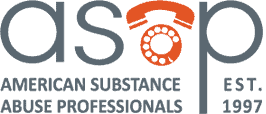Prevention Starts with Awareness: Building Safer Workplaces Together
By Sandra Serrano
In today’s rapidly evolving landscape of workplace safety, compliance alone isn’t enough. While following regulations is critical, it doesn’t fully protect employees from the emerging threats that exist beyond the rulebook. One alarming example is the recent drug mixture known as “New Jack City,” which sent 27 people to the hospital in Baltimore—a stark reminder that new substances can appear quickly and have serious consequences[1]. To stay ahead of these risks, organizations must go beyond basic compliance and invest in proactive training that equips both supervisors and employees with the knowledge to recognize and respond to signs of substance use and impairment. This blog continues our series on Supervisor and Employee Awareness Trainings, highlighting how early prevention efforts not only safeguard employee well-being but also deliver a clear return on investment through improved safety and preparedness.
The workplace safety landscape keeps changing, especially with substance use risks. About 18% of adults deal with substance use disorders[2], which makes it harder to maintain safety standards. Dangerous substances like xylazine have doubled in 30 states between 2019 and 2022[3]. Traditional safety compliance courses may no longer be enough on their own to address the complex challenges of today’s workplace.
“You don’t want to wait until there’s a crisis to act,” says Sandra Serrano, Chief Development Officer at American Substance Abuse Professionals (ASAP).
“Proactive training gives supervisors the ability to spot concerns early and empowers employees with real knowledge about the dangers of substance use—including today’s more potent and unpredictable drugs. Prevention isn’t just a policy—it’s a mindset rooted in awareness and preparation.”
Employers must track new drugs both locally and across the country. These substances can quickly affect workplace safety, productivity, and employee well-being. Organizations should update their policies and online safety compliance training. They need to teach supervisors how to spot signs of impairment. This piece will show how proactive awareness and prevention create safer workplaces and bring measurable returns on investment.
Employers Rethink Safety Compliance Training in Light of Emerging Drug Risks
The urgency for employers to rethink their traditional safety approaches has become clear from what’s happening now. A dangerous street drug mixture called “New Jack City” sent 27 people to the hospital in Baltimore, showing how new substance threats are making their way into communities across the country. This deadly mix contains fentanyl, heroin, and possibly xylazine—a veterinary sedative that standard overdose treatments can’t reverse. In some cases, it may also contain antifreeze or freon. The national data shows some mixed results. Drug overdose deaths dropped 26.9% from 2023 to 2024. However, xylazine detection rates have more than doubled in 30 states since 2019. Maryland’s data shows that xylazine was present in 20.6% of fentanyl overdose deaths between 2020 and 2023.[1]
These changes affect workplaces directly, especially since substance use disorders touch the lives of 17.9% of adults—about 46.3 million people. Smart organizations know that simple compliance isn’t enough to protect against these growing threats[4].
Baltimore’s response teaches valuable lessons that workplace safety programs can learn from. City officials took action with neighborhood stabilization responses, gave out naloxone kits, and improved community support services. Workplace strategies now need complete education programs, emergency preparedness protocols, and supportive environments to help affected employees[2].
Drug formulations keep changing in unexpected ways. Safety compliance training needs to move beyond simple checkbox exercises toward systems that prevent problems before they start. Organizations that keep up with new substance trends can protect their workforce better through updated policies, testing protocols, and targeted training programs.
What Effective Safety and Compliance Training Looks Like Today
Dangerous street drugs like “New Jack City” (a deadly mixture of fentanyl, N-Methylclonazepam, and potentially xylazine) have pushed organizations to develop detailed strategies that include:
- Education and awareness programs that help employees and supervisors spot signs of substance misuse
- Emergency preparedness protocols with naloxone on hand and training to respond to overdoses[5]
- Supportive environments that welcome recovery and offer flexible return-to-work options[6]
How Proactive Training Prevents Crises Before They Start
Safety compliance training helps prevent workplace substance crises instead of just reacting to them. Companies with forward-thinking training programs can spot issues before they turn into emergencies.
Supervisors learn to spot subtle behavior changes that could signal substance use problems. Quick action often stops accidents, injuries, and possible overdoses at work. Supervisors who know these warning signs become the first defense against dangerous threats like the “New Jack City” drug mixture.
Workers also benefit from substance education—especially as new drugs emerge in local communities. Detailed awareness programs teach workers about the risks of substances like xylazine. This drug is extra dangerous because it:
- Suppresses breathing functions
- Cannot be reversed by standard naloxone treatments
- Creates additional complications for emergency responders
The best prevention strategies take cues from successful public health responses. Baltimore’s neighborhood stabilization approach gives great lessons to workplace protocols. These include better monitoring systems and modern testing procedures.
Supervisors play a vital role in creating safer work environments. As SAMHSA notes, “Supervisors can encourage employees to seek help by providing information about available resources and by focusing on improving the employee’s job performance[7].”
Conclusion
Proactive training is the life-blood of workplace safety that works. Supervisors with the right skills to spot subtle behavior changes create a crucial defense against potential substance issues. The training will give workers a clear understanding of specific risks from substances like xylazine that regular treatments can’t reverse.
Smart employers know safety training must go beyond just following regulations. Their programs should mirror successful public health responses like Baltimore’s coordinated stabilization approach. These examples show how companies can build monitoring systems, improve testing methods, and create strategic collaborations to keep their workforce safe.
Numbers tell the story clearly. While almost 18% of adults face substance use disorders, companies with complete training programs reduce their risks by a lot. Companies that encourage supportive environments for affected employees prevent crises and see real returns on their safety investments[8].
Safety compliance training ended up being more about prevention than reaction. Companies staying current with drug trends locally and nationally can quickly adjust their policies to protect their teams. Prevention starts with awareness, and awareness comes from training that tackles real-life threats instead of just ticking regulatory boxes.
References
[1] – https://foxbaltimore.com/news/local/city-council-tackles-opioid-crisis-in-urgent-talks-amid-new-jack-city-drug-scare
[2] – https://www.cbsnews.com/baltimore/news/baltimore-partners-narcan-drug-opioid-overdose-penn-maryland-drug/
[3] – https://foxbaltimore.com/news/local/drug-markets-remain-hot-as-sources-say-emerging-new-jack-city-linked-to-baltimore-ods
[4] – https://go2asap.com/articles/reasonable-suspicion-training-what-supervisors-need-to-know/
[5] – https://www.nsc.org/workplace/workplace-wellbeing-hub/policies#:~:text=NSC%20encourages%20every%20workplace%20to,considerations%20related%20to%20naloxone%20adoption
[6] – https://go2asap.com/service/non-dotstate-required/
[7] – https://www.samhsa.gov/substance-use/drug-free-workplace/employer-resources/toolkit/prepare-workplace#:~:text=The%20Role%20of%20Supervisors&text=Supervisors%20can%20encourage%20employees%20to,improving%20the%20employee’s%20job%20performance
[8] – https://go2asap.com/articles/recovery-friendly-workplaces-everyone-deserves-a-second-chance/


